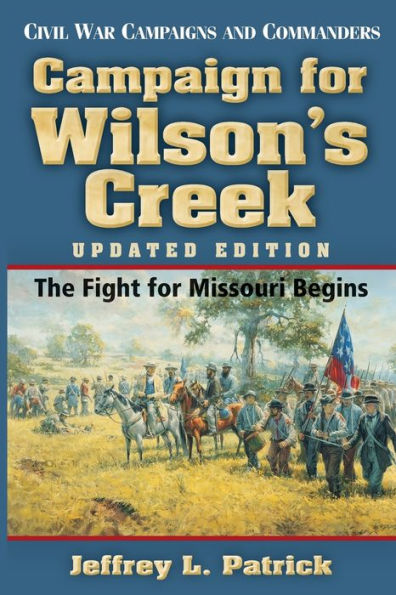Campaign for Wilson's Creek: The Fight for Missouri Begins
In early 1861, most Missourians hoped they could remain neutral in the upcoming conflict between North and South. In fact, a popularly elected state convention voted in March of that year that “no adequate cause” existed to compel Missouri to leave the Union. Instead, Missourians saw themselves as ideologically centered between the radical notions of abolition and secession. By summer 1861, however, the situation had deteriorated dramatically. Because of the actions of politicians and soldiers such as Missouri Gov. Claiborne Jackson and Union Gen. Nathaniel Lyon, Missourians found themselves forced to take sides. In this updated edition, author Jeffrey Patrick tells the fascinating story of high-stakes military gambles, aggressive leadership, and lost opportunities. Campaign for Wilson's Creek is a tale of unique military units, untried but determined commanders, colorful volunteers, and professional soldiers. The first major campaign of the Civil War to take place west of the Mississippi River guaranteed that Missourians would be engaged in a long, cruel civil war within the larger, national struggle.
"1103489988"
Campaign for Wilson's Creek: The Fight for Missouri Begins
In early 1861, most Missourians hoped they could remain neutral in the upcoming conflict between North and South. In fact, a popularly elected state convention voted in March of that year that “no adequate cause” existed to compel Missouri to leave the Union. Instead, Missourians saw themselves as ideologically centered between the radical notions of abolition and secession. By summer 1861, however, the situation had deteriorated dramatically. Because of the actions of politicians and soldiers such as Missouri Gov. Claiborne Jackson and Union Gen. Nathaniel Lyon, Missourians found themselves forced to take sides. In this updated edition, author Jeffrey Patrick tells the fascinating story of high-stakes military gambles, aggressive leadership, and lost opportunities. Campaign for Wilson's Creek is a tale of unique military units, untried but determined commanders, colorful volunteers, and professional soldiers. The first major campaign of the Civil War to take place west of the Mississippi River guaranteed that Missourians would be engaged in a long, cruel civil war within the larger, national struggle.
26.95
In Stock
5
1

Campaign for Wilson's Creek: The Fight for Missouri Begins
224
Campaign for Wilson's Creek: The Fight for Missouri Begins
224Paperback(2)
$26.95
26.95
In Stock

Product Details
| ISBN-13: | 9781933337791 |
|---|---|
| Publisher: | State House/McWhiney Foundation Press |
| Publication date: | 03/11/2019 |
| Series: | Civil War Campaigns and Commanders Series , #28 |
| Edition description: | 2 |
| Pages: | 224 |
| Sales rank: | 509,252 |
| Product dimensions: | 6.00(w) x 9.00(h) x 0.50(d) |
About the Author
From the B&N Reads Blog
